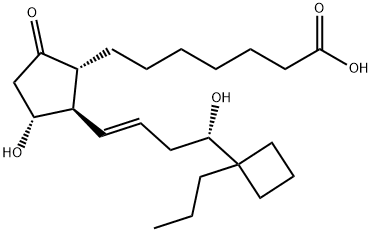Description
Butaprost is an EP
2 selective agonist which has frequently been used to pharmacologically define the EP receptor expression profile of various human and animal tissues and cells.
1,2 Prostaglandin free acids generally bind to their cognate receptors with 10 to 100 times the affinity of the corresponding ester derivative. Consistent with this trend, butaprost binds to membranes from EP
2 receptor-
transfected CHO cells with a K
i value of 2,400 nM, whereas butaprost (free acid) and CAY10399 (the 2-
series congener of butaprost free acid) exhibit significantly lower K
i values of 73 and 92 nM, respectively.
3 Butaprost (free acid) is therefore another useful tool for characterizing EP receptor-
mediated signalling events.
References
1. Kiriyama, M., Ushikubi, F., Kobayashi, T., et al.
Ligand binding specificities of the eight types and subtypes of the mouse prostanoid receptors expressed in Chinese hamster ovary cells Br. J. Pharmacol. 122(2),217-224(1997).
2. Lawrence, R.A., and Jones, R.L.
Investigation of the prostaglandin E (EP-) receptor subtype mediating relaxation of the rabbit jugular vein Br. J. Pharmacol. 105,817-824(1992).
3. Tani, K., Naganawa, A., Ishida, A., et al.
Design and synthesis of a highly selective EP2-receptor agonist Bioorg. Med. Chem. Lett. 11,2025-2028(2001).


